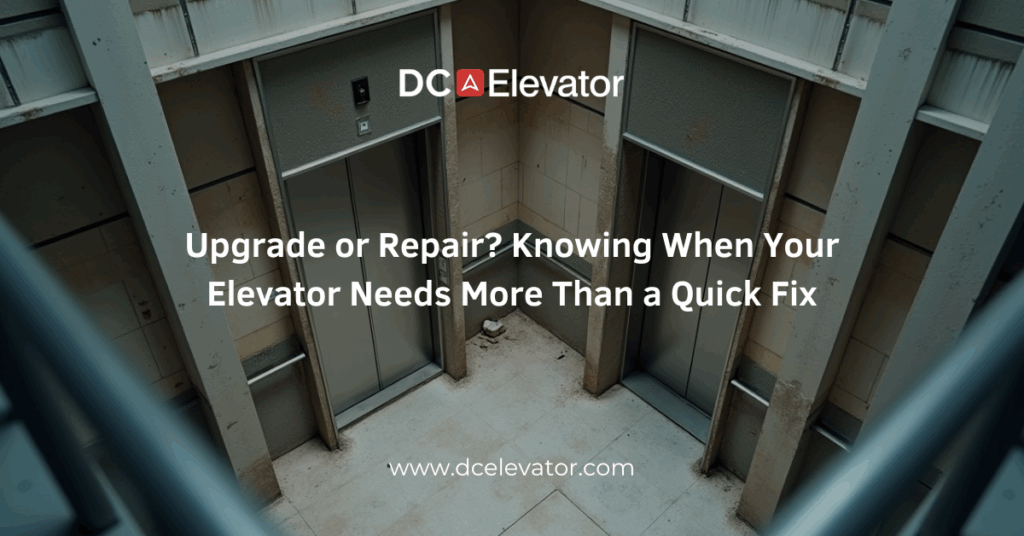When an elevator starts acting up—slower response times, frequent shutdowns, or rising maintenance costs—it’s easy to default to another repair. But at what point does it make more sense to consider a full upgrade instead?
For property managers, facility directors, and building owners, understanding when repairs are no longer the best long-term solution can save time, money, and ensure a safer, more reliable ride for tenants and visitors. As elevator systems age, repairs can become less effective and more expensive, while modernization can restore functionality and add long-term value.
In this blog, we’ll walk through the key signs that indicate it may be time to upgrade your elevator system rather than continue with short-term fixes.
1. Frequent Breakdowns and Costly Repairs
If you’re calling a technician more often than you’d like, it’s worth looking at the bigger picture. Continually repairing the same components—controllers, motors, or door operators—can quickly surpass the cost of a partial or full modernization.
A real-world example: A 30-year-old commercial elevator in a mid-rise office building required monthly service calls to address issues like delayed door openings and sudden halts. After assessing repair expenses over a 12-month period, building management found they had spent nearly as much as a major modernization would cost—without any long-term improvements.
When maintenance becomes a recurring line item, it’s time to assess the overall health of your elevator system.
2. Increasing Wait Times and Poor Ride Quality
A slow elevator might not seem urgent, but over time it affects tenant satisfaction and building reputation. As components wear down, you might notice:
-
Delayed door operations
-
Jerky stops and starts
-
Inconsistent floor leveling
-
Slower-than-normal travel between floors
These are signs that control systems, motors, or relay-based logic are outdated. Modern systems offer smoother rides, quicker response times, and smarter traffic handling—critical in high-traffic buildings like hospitals, office complexes, and residential towers.
3. Outdated Equipment and Parts Availability
Elevators built before the 1990s often use obsolete technology. If replacement parts are hard to find or discontinued, repairs become slower and more expensive. In some cases, technicians may need to fabricate parts or retrofit temporary solutions, neither of which is ideal for long-term reliability.
When parts are no longer manufactured or supported, it’s a strong signal that modernization is the most practical and future-proof option.
4. Compliance and Safety Concerns
Code requirements and safety regulations evolve. Older elevators may lack features now considered standard, such as emergency communication systems, door restrictors, or fire-service operation.
While you might be grandfathered in for certain features, modernization helps bring your system closer to current safety standards, reducing liability risks and improving peace of mind for building occupants.
5. Energy Efficiency and Sustainability Goals
Although energy savings might not be the first thing on your mind when your elevator needs a repair, outdated systems are often power-hungry. Modernization can reduce your building’s overall energy use—important for both operational costs and environmental impact.
Upgrading motors, controls, and lighting can deliver noticeable efficiency gains, especially in buildings aiming for sustainability certifications or lower utility bills.
Conclusion: Make the Right Call for the Long Term
While minor repairs are sometimes the right solution, there comes a point when upgrading your elevator offers better value, safety, and performance. If you’re managing an aging system and facing repeated service calls or outdated components, it may be time to consider a modernization strategy.
Unsure whether your elevator needs an upgrade or another repair? Our team can perform a detailed evaluation and help you determine the most cost-effective path forward. Contact us today to schedule an elevator analysis.
